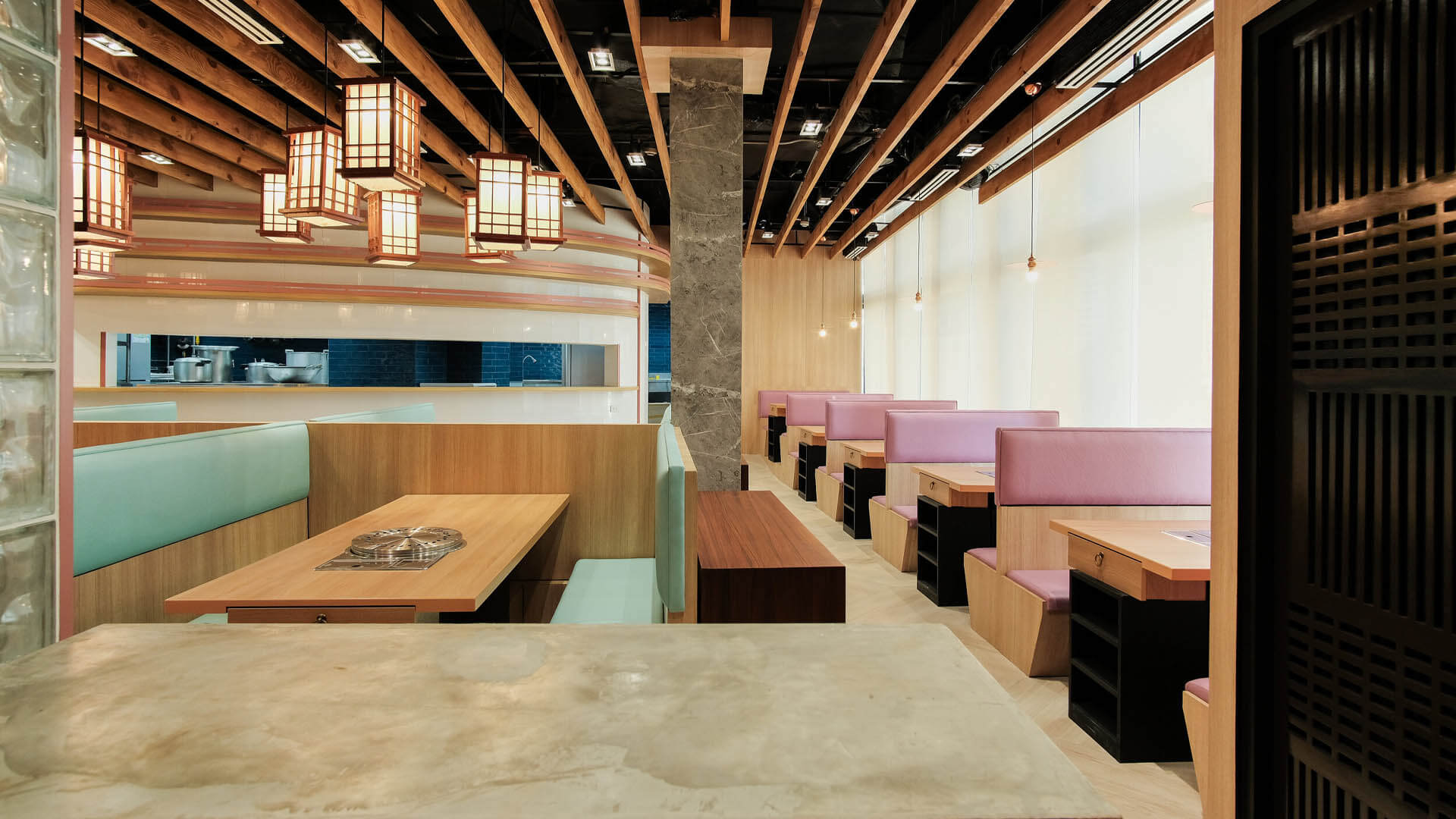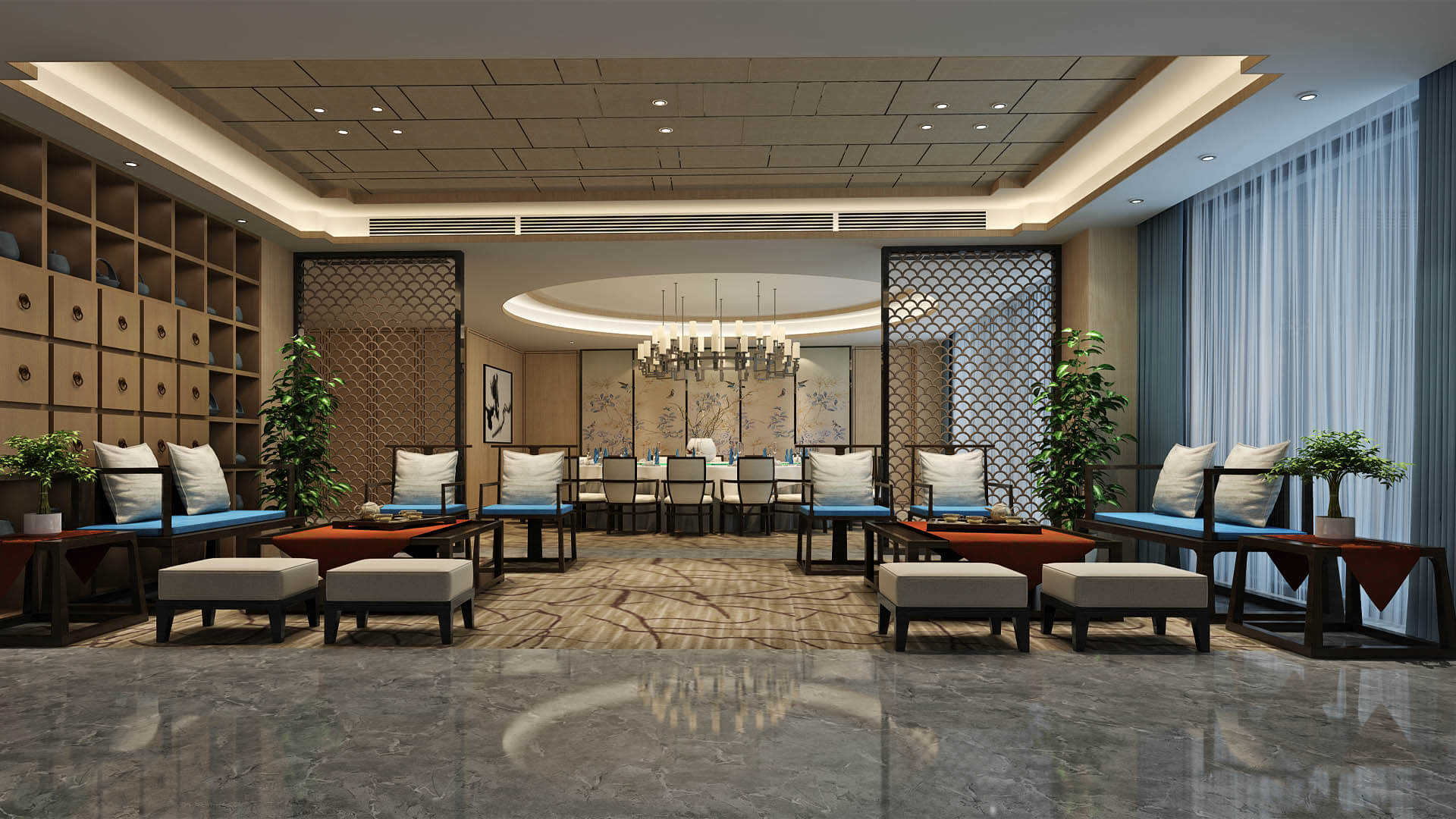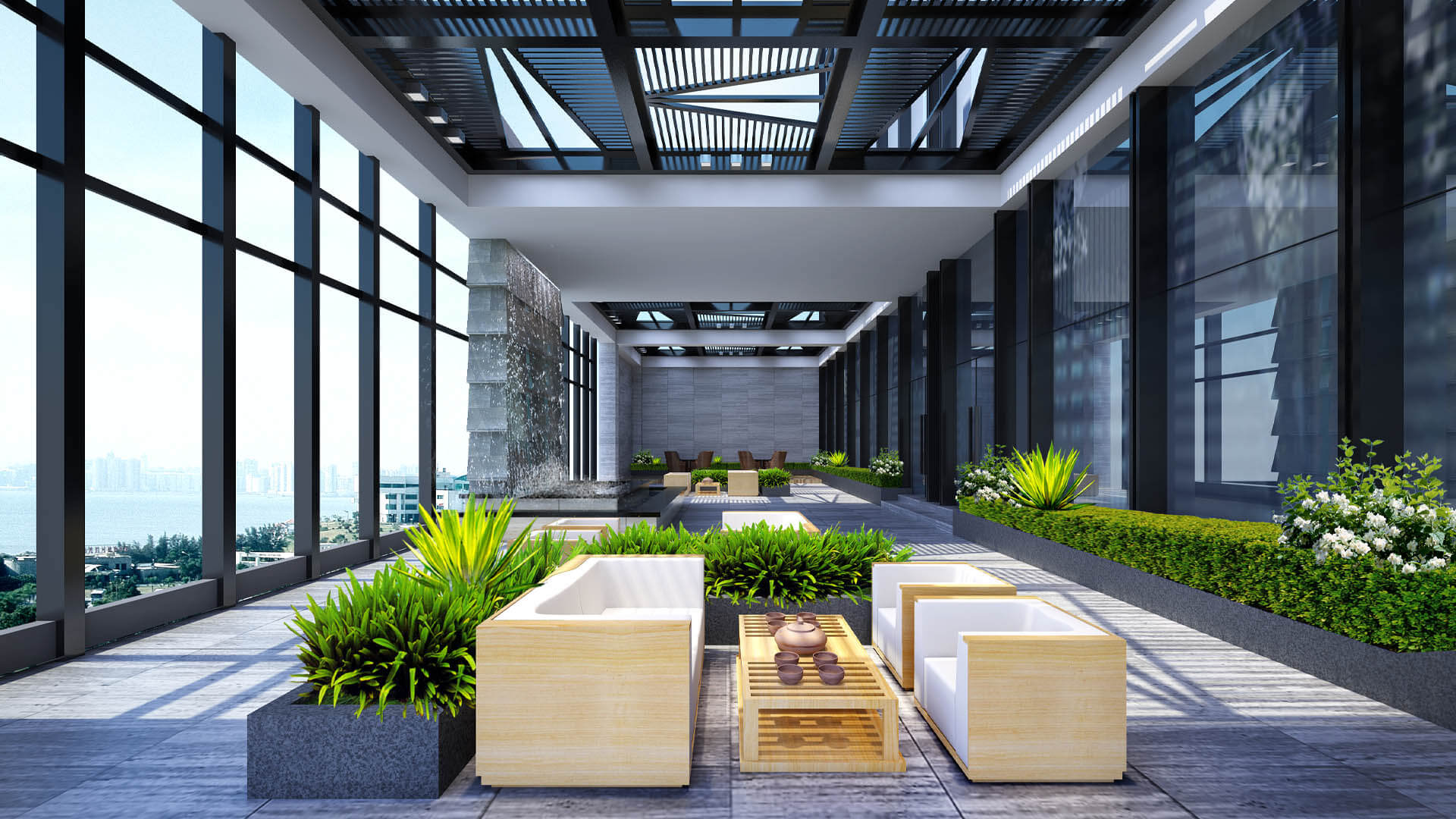Use Of Natural Materials Such As Wood And Stone
Wood and stone are two natural materials that are often used in Interior Design. For Korean Restaurants to create a warm, inviting atmosphere, reflecting Korean food culture. These materials are used in a variety of ways, including flooring, walls, and furniture, and combined with other design elements to create visually interesting spaces. Korean Restaurant Wall Interior Design can make the decoration more attractive.
The main advantage of using natural materials like wood and stone in restaurant design. They provide a sense of connection with nature. In Korean culture, there is a deep appreciation for natural materials. Incorporating these elements into the design of the restaurant helps communicate the culture to customers. Additionally, using natural materials creates a calm and peaceful environment, which is especially important in a restaurant setting.
Use Of Rustic Color Palette
In addition to incorporating natural materials such as wood and stone, many Korean restaurants use a rustic color palette in their interior design. It helps to create a warm and inviting atmosphere. A rustic color palette typically includes earthy tones such as browns, beiges, and greens, shades of red and yellow.
The advantage of using a rustic color palette in Korean Restaurant Interior Design. It helps customers feel comfortable and at ease. These colors are often associated with natural materials such as wood and stone, as well as traditional Korean textiles. The rustic color palette helps create a cohesive design that complements the natural materials used in the space.
When using a rustic color palette in Korean Takeaway Interior Design, it’s important to balance warm and cool tones to create a pleasant atmosphere. For example, warm brown tones are balanced with cool greens to create a calm and balanced space. Additionally, using different shades and textures of the same color helps add aesthetics and visual interest to the design. Circle Interior Limited is the top architectural firm with 13 years of experience providing this Korean restaurant designing service in Dhaka, Bangladesh using their technology
Traditional Korean Motifs And Patterns
Another way to create a culturally rich environment is to use traditional motifs and patterns in the residential Korean restaurant design. Traditional Korean motifs and patterns are found in a variety of arts, textiles, and crafts, and are incorporated into restaurant designs in many creative ways. Korean motifs often include natural elements, including flowers, trees, and animals, as well as geometric shapes.
A popular traditional Korean motif is the lotus flower, which is often used in Korean art and textiles. Lotus motifs are incorporated into restaurant designs through wallpaper, fabric patterns, or even light fixtures or artwork. Korean Traditional Restaurant Interior Design geometric patterns, such as hanbok traditional Korean clothing. It is incorporated into design elements like wallpaper or tile work to add visual appeal and glamor to the design. By using traditional motifs and patterns in South Korean Restaurant Design. You can create a unique and memorable dining environment that reflects the rich cultural heritage of Korean cuisine.
Communal Seating Arrangement
Communal seating is a common feature in Korean Restaurant Interior Design. In traditional Korean culture, communal dining is a way to share food and create social connections. Therefore, communal seating arrangements in Korean restaurants are designed to create a sense of social interaction and community.
One advantage of communal seating in Korean restaurants is that it creates a lively atmosphere. Customers enjoy their food while interacting with other customers. Communal seating in the interior design makes the dining experience more approachable and less formal, encouraging customers to enjoy their meals in a comfortable environment.
Private Dining Room For Couples Or Families
A private dining area for families or couples is important in Korean restaurant architectural design ideas. These places offer dining experiences with family intimacy, allowing families or couples to enjoy their meals in a private setting.
Korean Restaurant Interior, Private dining spaces in Korean restaurants vary, from private dining rooms to small booths or tables that are separate from the main dining area. A common feature of private dining spaces in Korean restaurants is the use of sliding doors or curtains that create more personal space. These doors or screens add visual interest and cultural aesthetics to the space, with traditional Korean motifs or not.
Visible Kitchen
An open kitchen is a popular feature of architectural design for Korean restaurants. Ways to showcase the cuisine and provide unique dining experiences for customers.
In Korean restaurants, an open kitchen is usually the range where customers watch their food being prepared. This type of kitchen design is often used in Korean barbecue restaurants, where customers grill their meat and vegetables.
One of the advantages of an open kitchen in Korean Restaurant Interior Design is that it creates a sense of transparency and authenticity. Customers watch the food being prepared in front of them, which enhances their appreciation of the cooking process and the quality of the ingredients. When designing an open kitchen, it’s important to consider the layout, lighting, and functionality of the space.
Minimal Design
Minimalism is a design technique that emphasizes simplicity, functionality, and the use of minimal materials to create cohesive, elegant aesthetic environments. In modern Korean restaurant design, minimalism is important to create an elegant and pleasant atmosphere.
In the interior design of the minimal Korean restaurant, the use of natural materials such as wood, stone, and bamboo as well as the use of a neutral rustic color palette create a calm and relaxing atmosphere. Lighting is generally subtle and warm, combining natural and artificial light to create a comfortable and inviting atmosphere. Furniture and other items are kept to a minimum to avoid clutter and maintain an open space. Korean BBQ Restaurant Interior Design can be added to this Decoration for an extra option. Seating arrangements are often simple and functional, such as wooden chairs and tables that blend into the overall design. In this case, you can trust Circle Interior Ltd, one of the best Architecture agencies in Dhaka, Bangladesh designing Korean-style restaurants in this city.
The Use Of Korean Ceramics And Pottery
Korean ceramics and pottery have a long and rich history and are often used as decorative elements in small space Korean restaurant design. These beautiful and unique items add a modern ambiance and traditional touch and enhance the overall atmosphere and aesthetics of the Korean Restaurant Decor.
Korean ceramics and pottery are being used in a variety of ways in Korean Restaurant Interior Design. For example, tableware, such as bowls, plates, and cups, are used not only for food; Also Korean Restaurant Ceiling Design is another way to showcase the beauty and artistry of Korean ceramics. Also, ceramic items are being used as decorative elements like vases, jars, and figurines to add a traditional touch to restaurants. In Interior Design For Korean Restaurant Decoration, A popular type of Korean ceramic is celadon, a type of porcelain known for its beautiful blue-green glaze. Celadon items can be used as accents or as tableware, adding a touch of elegance and sophistication to restaurant interior design.
Spread Of Handicrafts
Crafts are also can be used in Korean Restaurant Wall Design. They play an important role in Korean culture and are being used to add a traditional and unique touch to the large Korean restaurant design. Crafts like traditional textiles, handcrafted wooden furniture, papercraft, and metalwork are being used. It enhances the overall ambiance and aesthetics of the restaurant.
Traditional Korean textiles are used as wall hanging decor or curtains, adding color and texture to the space. These textiles are also used as upholstery for chairs and benches, adding a traditional touch to the seating area.
Paper crafts, such as hanji lamps and lanterns, are used as decorative elements in Korean restaurant interior and exterior design. These crafts can create a warm and inviting atmosphere, adding a touch of traditional Korean style. Handicrafts make the Small Korean Restaurant interior stand out from others.
Fusion Of Modern With Traditional Style
Korean-style interior design is known for emphasizing simplicity, harmony, and natural elements. In recent years, Korean-style interior design combines modern and traditional elements, creating a unique and balanced aesthetic.
Modern design elements such as sleek lines, minimal furnishings, and contemporary art are combined with traditional Korean design elements such as hanok-inspired architectural features. Combine traditional patterns with natural materials such as wood and stone. Designers are able to create spaces that create an aesthetic restaurant experience for customers. A fusion of modern and traditional styles is seen in the variety of Korean Restaurant Interior Design spaces. Due to this, the number of people who like Korean Takeaway Interior Design with a sophisticated environment is increasing.
In conclusion, small space Korean restaurant design is a unique style that incorporates traditional Korean elements with modern design to create a comfortable and welcoming dining experience. The goal of interior design is to create a visually appealing and comfortable space. It enhances the overall dining experience for customers. By choosing the right materials in the design and meeting the needs and preferences of the restaurant owner; beautifully designed Korean restaurants create a lasting impression on customers and help establish a prosperous restaurant business.









































